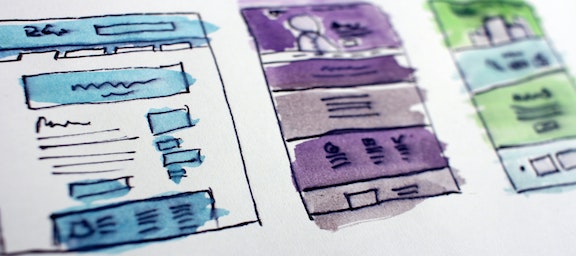|
Audio |
Video |
|
Voiceover: What Went Right: Bodies in Proximity |
Text: What Went Right: Bodies in Proximity Animation: cursor making a square around words |
|
Voiceover: In the production stage, game development more often than not includes team-based collaboration that runs ... |
B-roll: People sitting at table with paper and tablets.
|
|
Voiceover: ... alongside and through many of the game’s practices, from prototyping ideas to doing team playthroughs in offices and with publics. Speaking to their overall games, 23 developers related “right” feelings to interactions with collaborators. |
Text:
Graphics:
B-roll:
Text:
B-roll: |
|
Voiceover: Very close to “collaboration” in terms of frequency ... |
Text:
Graphic: |
|
Voiceover: ... design was an area of production practice that 22 developers referenced with pleasurable feelings in the corpus. |
Text:
Graphic: |
|
Voiceover: Design refers to the team or creator’s approach to a game mechanic, map, interface, etc. A game’s design has to feel right for the team before it goes to the public. |
B-roll: People walking out of a room and down a halfway talking enthusiastically. Video by Александр Копейкин from Pixabay.
|
|
Voiceover: The 22 developers who wrote more explicitly about scenes of design described feelings that they wanted to resolve between the game and players, including themselves. Cited just below collaboration and design practices, testing went right for 20 developers in our corpus. |
Text:
Animation:
|
|
Voiceover: Testing went right for 20 developers in our corpus. Testing includes working with feedback that stems from playtesting with co-workers and external players (at the office, at conventions), quality assurance testing for bugs and glitches, and beta testing in remote, public settings. |
Text:
Graphic: |
|
Voiceover: For developers, in-person feedback was more valuable than remote testing with beta programs because though it offers an archive of feedback, remote testing may not be as immediate or revelatory. |
B-roll:
B-roll: |
|
Voiceover: Scholars have argued that affect is a release of excessive energy. Feelings are circulatory and in transit with social goods, which reflect back on bodies. |
Text:
Animation:
|
|
Voiceover: To release even a beta version of a game in the world and receive positive feedback amounts to a pleasurable, circulatory experience. |
Text:
Animation:
|
4. The Most Pleasurable Practices under “What Went Right”: Three Insights
In this section, we discuss the three most pleasurable areas of practice under “what went right,” as described in post-mortem articles. We start with “right” because developers often start with that discussion. To guide our analysis, we start with a brief table outlining the top three areas of practice referenced by developers.
| Practice | References |
|---|---|
| Collaboration (includes references to teams, external collaborators, freelancers) | 26 references across 23 developers |
| Design (includes overall design discussions, level design, mechanics) | 26 references across 22 developers |
| Testing (includes references to internal quality assurance testing, useability tests, and beta releases of games) | 24 references across 20 developers |
4.1 Collaboration in Relation to Design
In the production stage, game development more often than not includes team-based collaboration that runs alongside and through many of the game’s practices, from prototyping ideas to doing team playthroughs in offices and with publics. Speaking to their overall games, 23 developers related “right” feelings to interactions with collaborators. Collaborating with internal team members and freelancers on design and engineering tasks is an pleasurable, concurrent practice that unites other practices. What’s interesting to us is that only nine out of 23 developers mentioned that collaboration happened in physical offices and work spaces, narrating immediate, good feelings that circulated among the team. Consider how developers such as Alexis Kennedy, Ted Morris, Adam Tierney, and Sara Casen spoke about their respective teams. In these post-mortems, the developers are speaking about in-person collaborations that involved whiteboards, impromptu meetings for problem-solving, team playthroughs, and mental-health check-ins.
I was properly astonished to find out how much fun this [teamwork] was, and how invigorating it was to surrender some control to people who could do things I was incapable of. Failbetter has become a genuinely collaborative studio, and Sunless Sea unmistakably carries everyone’s fingerprints (Kennedy, 2015)
... impromptu meetings sprang up to solve problems on the spot, everyone was on the same page about the components they were working on, windows were now a more widely available commodity and there seemed to be less of a reliance on email to get things done. There were, of course, a few transitional issues as well (like noise), but after everyone got used to their new environment, that regulated itself fairly well – or people started wearing headphones. (Morris, 2015)
… we began doing group playthroughs with all the designers and project leads. This proved to be an invaluable practice because team members could see how other players experienced their sections of the game, and we could talk as a group about what worked, ask questions, express confusion or excitement, and come up with ideas as a group for improvement (Tierney, 2015)
Everyone stated their levels of stress each week, so we could keep track of both the individuals and the team’s stress levels. When any team is put under pressure it has a way of ripping the team apart, but we managed to grow even closer during hectic periods since we could lean on each other for help and support. (Casen, 2018)
The above narratives of collaboration reflect what Alexander and Williams (2015) call “proximal composing,” of inventing and composing in shared spaces. Game developers find pleasure being near bodies, whether collaborating with a colleague on a task or participating in a team playthrough during office hours, to feel their way through projects—to share immediate feelings of confusion, surprise, and the like. Furthermore, while only nine out of 23 developers mentioned in-person collaboration, three additional developers who have remote teams (or organizational methods we couldn’t determine) drew on bodily language to describe the positive experiences with collaborators.
A screen share on Google Hangouts is as effective as walking over to someone's desk to check out a new feature. We use Dropbox as part of the build process, and to share assets and distribute builds if necessary. Progress is easy to track and visible to the rest of the team. (Wakeley, 2015)
Throughout the five years of development, we fed off each other like we were a single organism – a rarity in the industry. (Lester, 2019)
It’s the energy and the heart that was all there. And this is why, also, we all felt so exhausted at the end of production. I’ve never, ever put this amount of thinking, energy, stress, and focus on something for this period of time. (Gibeault, 2018)
4.2 Design Feels
Very close to “collaboration” in terms of frequency, design was an area of production practice that 22 developers referenced with pleasurable feelings in the corpus. Design refers to the team or creator’s approach to a game mechanic, map, interface, etc. It’s not surprising that game developers spend a considerable amount of time working on design because it is the most player-centred. Anticipating what players will do, developers want to design something new and exciting—not just to them but to players writ large. It’s what developers often call “game feel,” that multivalent term that encompasses control, virtual sensations or “appeal. It’s all about layering on effect after careful effect, polishing every interaction—no matter how trivial—until interacting with the game has a foundation of aesthetic pleasure” (Swink, 2008, p. 1). A game’s design has to feel right for the team before it goes to the public. Chris Rhinehart and Ryan Jackson (2015), lead designer and executive producer for the psychological thriller survival-horror game Lost Within, explained it this way:
As we researched methods and brainstormed ideas for scary, psychologically terrifying moments, we realized that one key way to do this was to make players never feel like they are truly in control of the situation. The player should always have good interface controls to interact with the game, but they should always be tense about the situation and what could possibly occur ahead (Rhinehart & Jackson, 2015).
At this point, readers might be asking, “Wait, aren’t most, if not all, developers concerned with design?” Including Rhinehart and Jackson, these 22 developers who wrote more explicitly about scenes of design described feelings that they wanted resolved between the game and players, including themselves. When Jon Ingold and Joseph Humfrey (2015) thought their original design for 80 Days felt like a chore and were “terrified that the game was going to become a folly of Titanic proportions,” for example, they made some parts of the game optional. When the indie game team DoubleBear created a “noise” system related to zombie enemies in its game Dead State, the game was exciting. “If the Noise system hadn’t worked, our combat would have been a lot less exciting, and the zombie apocalypse feel of the game would have been lost. If Shelter management had been less appealing or if the GUI was too complex, it would have made a large portion of the game unappealing” (Mitsoda, 2015). Taro Omiya (2015) frames their design experiences for Star Driller Ultra as “adding juice to the game,” meaning they amped up the sound and visual effects to appeal to players. Design discussions like these foreground ways in which feelings are attached to things—things like sound, interfaces, controllers—in anticipation of player experiences. Design, in other words, anticipates the feelings of players.
4.3 Real People, Real Testing
Cited just below collaboration and design practices, testing went right for 20 developers in our corpus. Testing includes working with feedback that stems from playtesting with co-workers and external players (at the office, at conventions), quality assurance testing for bugs and glitches, and beta testing in remote, public settings. Simply put, testing is feedback. For game developers, testing with audiences supports problem-solving efforts related to game design, also generally validating their ideas in formal and informal ways. With feedback, a development team often moves forward with more confidence.
By the numbers, 11 of the 20 game developers directly referred to in-person testing, suggesting that sensing bodies in proximity offered feedback that improved their designs. For these developers, in-person feedback was more valuable than remote testing with a program like Steam’s Early Access program (used for releasing beta versions of games) and similar beta programs that put their game in front of players amid a game’s development. We return to Casen’s (2018) post-mortem on the supernatural puzzle game Lake Ridden, for which she described game testing with real players. Shaun McCabe and Chad Dezern’s (2016) reflections on the science-fiction game Ratchet and Clank also stressed the embodied actions (or lack thereof) of young players. Aaron and Forest San Filippo (2016) spoke about the importance of player feedback at conferences. Across genres, games warrant feedback with synchronous, sensing bodies.
We spent a great deal of time and money on testing the game on real people. We did this in two ways; on players at conferences and players that came into the office to play Lake Ridden...If something deviated too much from the desired outcomes we compiled this feedback in an actionable way to the development team. This testing was absolutely invaluable to make sure Lake Ridden got such a good reception from puzzle gamers. (Casen, 2018)
We tested the game early and often with 7-9 year olds, even during pre-production….We were encouraged to see that kids could articulate solutions to the puzzles, even if they didn’t understand all of the component pieces. We didn’t need to make the puzzles any easier, we just needed to clean up some of our messaging…..Later tests revealed that very young players tended to ignore the right analog stick; they didn’t quite grasp the benefit of moving the camera, and weren’t quite coordinated enough to move two sticks at once. (McCabe & Dezern, 2016)
Participating in events like PAX showed us how much we could learn through in-person playtesting. Not only did we discover tons of things about our game, we also made connections with other devs and industry folks. That network of people has proven to be incredibly important to us personally and professionally. (Filippo, 2016)
By referencing the above passages, we do not suggest that remote feedback practices, such as developers who use Steam’s Early Access program are less valuable and insignificant to feelings. Early Access and remote feedback experiences cultivate an archive of feedback, which is bound up with feelings that circulate back to and impinge on the development team. As Charles Cordingley (2016) wrote of Early Access, “just knowing that some people have paid their hard earned money for the game is huge motivation to make it the best game I can (admittedly not many people, but even one is enough” (“Concealed Intent Development Postmortem”). We also call on solo developer Thomas Brush’s (2017) reflections on his adventure game Pinstripe, which received copious written feedback from judges of an independent games festival.
It’s a sinking feeling like none other. It’s the worst. But I bit the bullet, printed out the comments, and slapped them on my office wall. I read them pretty much every day, and would pace my office explaining their solutions to George (my pup). I’m proud to say the game is 100x better because of this feedback. (Brush, 2017)
Brush’s narrative suggests that remote feedback cultivates feelings and materially rich actions, putting game developers in motion toward the completion of a project. While remote feedback might not be as immediate and revelatory as in-person feedback in conventions and office spaces, it is still vital to the production stage. In cases like Brush’s, remote feedback can orient bodies toward material conditions. Affect theory maintains that affect is a release of excessive energy, feelings are circulatory and in transit with social goods, which reflect back on bodies of production (Ahmed, 2010; Anable, 2018; Stewart, 2007). To release even a beta version of a game in the world and receive positive feedback amounts to a pleasurable, circulatory experience. In sum, game developers find pleasure in collaborating on a game and revising its design and various features after receiving feedback from internal and external testers. But interestingly enough, they also find pain in managing all those features. We take up that idea in the next section.

Literature Review:
Situating Post-Mortems
A study of post-mortem articles would further amplify theories of feelings that limit and drive rhetorical activity.

What Went Right
A number of developers argued that collaboration, design and testing were critical to their development process.

Concluding Ideas &
for Creators and Teachers
What would happen if writing scholars wrote more post-mortems? What does a post-mortem assignment look like in a writing classroom?

Methodology: Collecting & Analyzing Post-Mortems
We analyzed 60 articles through the lenses of rhetorical and affect theories to understand feelings.

What Went Wrong
A number of developers argued that management, design and marketing were difficult when working remotely.

Making Our Project: Our Post-Mortem & References
We make our rhetorical moves and affectively rich experiences visible and draw more parallels to game and webtext development.